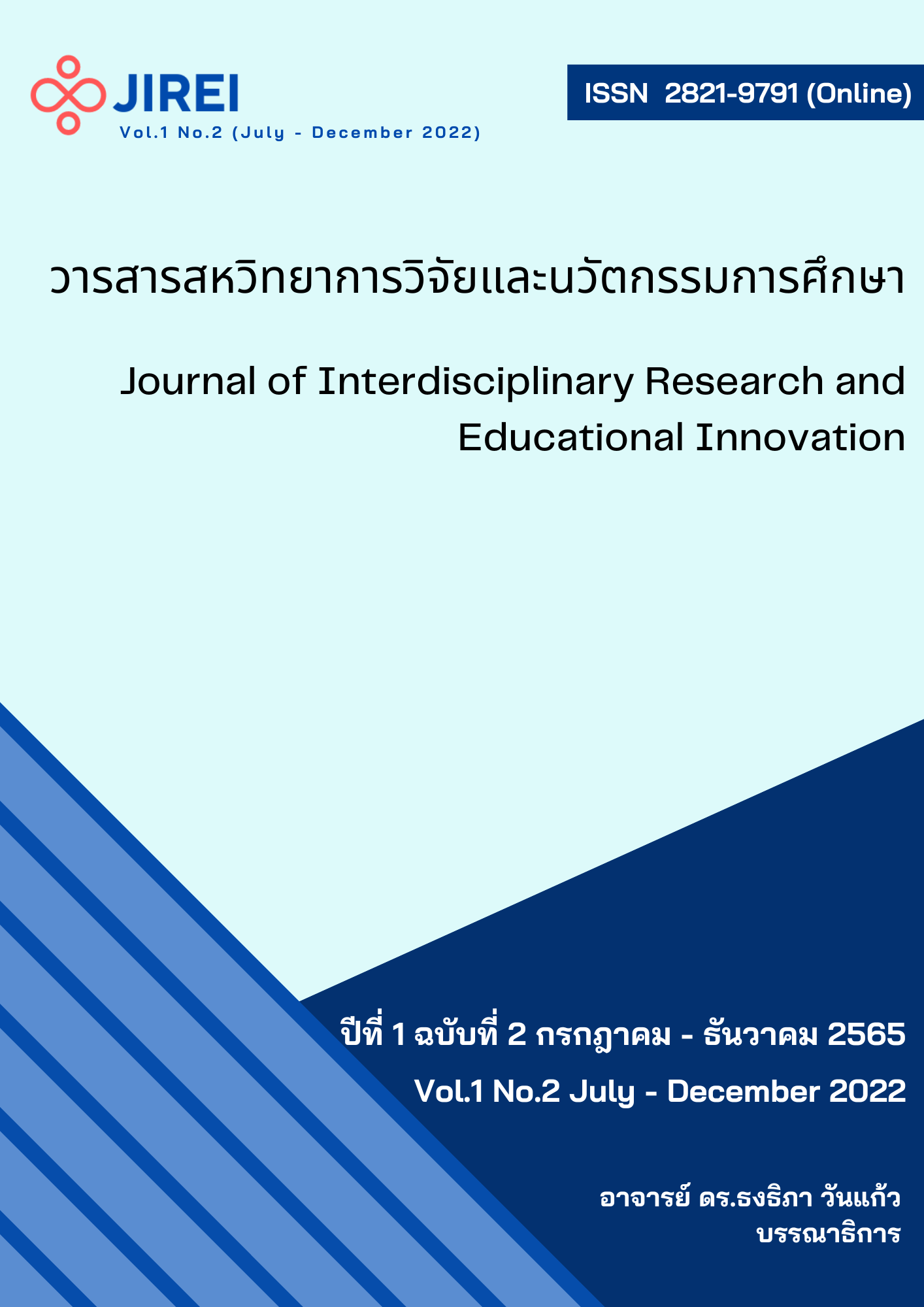A Study of the Abundance of Marine Ecosystems between a Tourist Spot and Non-Tourist Spot of the Samae San Islands in Chonburi, Thailand
Keywords:
Ecological abundance survey, The abundance of ecosystems, marine ecosystem, SCUBA, Samae San IslandsAbstract
The objectives of this research study were to 1) explore the abundance of marine ecosystems between tourist spots with no tourist spots of the Samae San Islands and 2) compare the abundance of marine ecosystems between tourist spots and no tourist spots of the Samae San Islands, Chonburi, which researcher had set the survey point, Ko Chan, Hin Mu diving point which is a point for tourists and the Miracle Point, which has no tourists because it is not a point to bring tourists to dive at this point. The study results of the abundance of marine ecosystems between tourist spots and no tourist spots of the Samae San Islands, Chonburi. It is divided into three phases: Phase I, Quality Operations Planning (PDCA) Phase. Phase II, Marine Ecosystem Survey Phase by Ventilation Diving. The depth does not exceed 18 meters by the process of the “Open Water 7 Steps survey”. Phase 3. The results of the analysis revealed that the uninhabited dive sites had lower pH values and
found a variety of animals, mainly sea urchins, squids, rays, and sea turtles, while tourist dive sites have higher pH values and only two species are found: fish and sea urchins Although the number of fish is greater, the species diversity is less. Therefore, the point where there are no tourists still maintains the abundance of marine ecosystems better than the point where there are tourists.
References
กรมอุทกศาสตร์ กองทัพเรือ โดยกองสมุทรศาสตร์ เป็นหนึ่งในคณะกรรมการดำเนินงาน อพ.สธ. (2565). น้ำทะเล ก็มีมาตรฐาน. กรุงเทพมหานคร: ศูนย์ข้อมูลข่าวกรองภูมิสารสนเทศทางอุทกศาสตร์.
ตรรกพร สุขเกษม. (2560). ผลการสอนโดยใช้วงจรพีดีซีเอที่ส่งผลต่อคุณภาพผลงานของนักศึกษา
โปรแกรมวิชารัฐประศาสนศาสตร์ ในรายวิชาธรรมาภิบาลในการจัดการ ภาครัฐ ภาคเรียนที่ 2/2560. กำแพงเพชร: มหาวิทยาลัยราชภัฏกำแพงเพชร.
ศูนย์ความปลอดภัย อาชีวอนามัยและสิ่งแวดล้อม จุฬาลงกรณ์มหาวิทยาลัย. (2563). กฎกระทรวงกำหนดมาตรฐานในการบริหาร จัดการ และดำเนินการด้านความปลอดภัย อาชีวอนามัย และสภาพแวดล้อมในการทำงานเกี่ยวกับงานประดาน้ำ พ.ศ. 2563. สืบค้นวันที่ 15 กรกฎาคม 2565, จาก https://www.shecu.chula.ac.th/home/content1.asp?Cnt=557
สุพจน์ จันทราภรณ์ศิลป์. (2559). ชีววิทยาและการอนุรักษ์เตาทะเลไทย. ภูเก็ต: สถาบันวิจัยและพัฒนาทรัพยากรทางทะเล ชายฝั่ง ทะเล และปาชายเลน.
เมตต์ ปุจฉาการ และคมสัน หงภัทรคีรี. (2558). ฟองน้ำทะเลและเอคไตโนเดิร์มในพื้นที่ปกปักพันธุกรรมพืชทางทะเล หมู่เกาะแสมสาร จังหวัดชลบุรี. ชลบุรี: สถาบันวิทยาศาสตร์ทางทะเล มหาวิทยาลัยบูรพา.
สุเมตต์ ปุจฉาการ และคณะ. (2559). การศึกษาความหลากหลายของชนิดสัตว์ทะเลในแนวปะการังในภาคตะวันออก (จังหวัดชลบุรี). ชลบุรี: สถาบันวิทยาศาสตร์ทางทะเล มหาวิทยาลัยบูรพา.
อิสระพงษ์ พลธานี และอุมาพร บุญเพชรแก้ว. (2560). การส่งเสริมการท่องเที่ยวเชิงนิเวศทางทะเลอย่างยั่งยืนของเกาะทะล จังหวัดประจวบคีรีขันธ์. วารสารมหาวิทยาลัยคริสเตียน, 23(3), 394-404.
Alexey A. Kotov et al. (2022). Species Richness and Diversity of Aquatic Ecosystems: Lessons from a Special Issue. MDPI, Basel, Switzerland.
George R. Parsons et al. (2007). Valuing Changes in the Quality of Coral Reef Ecosystems: A Stated Preference Study of SCUBA Diving in the Bonaire National Marine Park. Environmental and Resource Economics, Netherlands.
Michael G. Sorice et al. (2007). Managing Scuba Divers to Meet Ecological Goals for Coral Reef Conservation. Royal Swedish Academy of Science, Sweden.
Myers et al. (2007). Cascading Effects of the Loss of Apex Predatory Sharks from a Coastal Ocean. Retrieved 17 July 2022, Retrieved from URL: www.sciencemag.org/cgi/content/full/315/5820/1846/DC1





